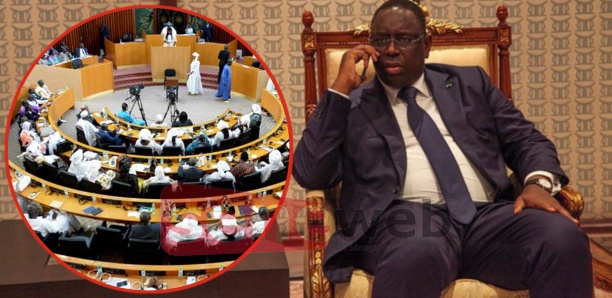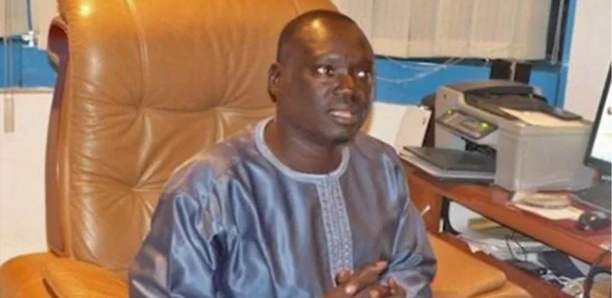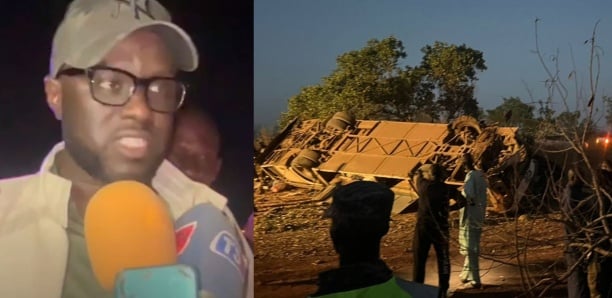
-NEW YORK- Wall Street a emmené le Dow Jones et le S&P 500 à des niveaux record vendredi, dopée par de bons indicateurs américains et des mesures de relance monétaire au Japon: ces indices vedettes ont grimpé de 1,13% et 1,17% respectivement.
Selon les résultats à la clôture, le Dow Jones Industrial Average s'est envolé de 195,10 points, à 17.390,52 points, au-delà de son dernier sommet historique en clôture (17.279,74 points) atteint le 19 septembre.
L'indice élargi S&P 500 s'est adjugé 23,40 points à 2.018,05 points, également au-dessus de son dernier record de 2.011,36 points, datant du 18 septembre.
Le Nasdaq s'est apprécié de 1,41%, ou 64,60 points, à 4.630,74 points.
Dès l'ouverture, les indices new-yorkais se sont dirigés vers les sommets. Que demander de mieux pour les marchés américains que du stimulus monétaire à l'étranger, et de bons indicateurs chez eux qui montrent que l'économie américaine va mieux et n'a plus besoin de l'aide de la Fed, a relevé Gregori Volokhine, de Meeschaert Financial Services.
La Réserve fédérale américaine (Fed) a cessé son programme de soutien monétaire exceptionnel mercredi en se montrant plus optimiste sur la conjoncture.
-LONDRES- L'euro et le yen baissaient nettement vendredi face à un dollar toujours soutenu par les récents commentaires et décisions de la Réserve fédérale américaine (Fed), la monnaie nippone souffrant en outre de l'assouplissement inattendu de la politique monétaire de la Banque du Japon (BoJ).
Vers 17H00 GMT, la monnaie unique européenne valait 1,2536 dollar contre 1,2612 dollar jeudi vers 21H00 GMT. Elle est tombée vendredi vers 13H30 GMT à 1,2486 dollar, son niveau le plus faible depuis fin août 2012.
L'euro se renforçait face à la monnaie nippone, à 140,35 yens - après avoir atteint vers 11H20 GMT 140,71 yens, son plus haut niveau depuis le 19 septembre - contre 137,75 yens jeudi.
Le dollar aussi montait nettement face à la devise japonaise, à 111,96 yens - montant même vers 14H45 GMT à 112,48 yens, son niveau le plus élevé depuis fin 2007 - contre 109,22 yens la veille.
"Le dollar s'est apprécié face à l'euro, au yen, ainsi que face aux monnaies des pays émergents, alors que la Fed se dirige lentement mais sûrement vers une hausse de ses taux en 2015", commentait Nick Stamenkovic, analyste chez RIA Capital Markets.
Ainsi, il s'agit "plus d'un épisode de force du dollar que de faiblesse de l'euro", expliquait l'analyste.
-CHICAGO- Les cours du soja, du maïs et du blé ont profité cette semaine à Chicago d'inquiétudes liées à des craintes sur l'offre étroite en oléagineux aux Etats-Unis, s'ajoutant à des problèmes d'acheminement des graines de soja, face à une demande record.
"Les cours agricoles ont très clairement été portés à la hausse par la solidité du marché physique du soja et des tourteaux de soja", a relevé Mike Zuzolo, de Global Commodity Analytics and Consulting.
En effet, du fait de réserves très étroites en produits oléagineux issus des dernières récoltes et du retard pris par les nouvelles en raison de pluies, et d'un encombrement des réseaux ferroviaires notamment pour acheminer les cultures, l'approvisionnement en soja a connu beaucoup de difficultés cette semaine.
Les usines américaines de trituration du soja "ont ainsi bien du mal à mettre la main sur la matière première dont elles ont besoin pour fonctionner", a poursuivi M. Zuzolo.
Les problèmes ferroviaires étaient attribués par une partie du marché au boom du pétrole issu du schiste aux Etats-Unis, dont l'exploitation frénétique ces dernières années tend à se traduire par un pic de circulation sur le rail, faute d'oléoducs et d'infrastructures suffisantes pour écouler le brut.
-PARIS- Les Bourses européennes ont terminé en forte hausse vendredi, dopées par l'annonce de nouvelles mesures de relance monétaire au Japon et de bons indicateurs américains.
"L'effet Japon est le catalyseur majeur pour les marchés", a relevé Alexandre Baradez, analyste de IG France.
La Banque du Japon (BoJ) a décidé dans la nuit d'augmenter ses rachats d'actifs alors même que son homologue américaine, la Réserve fédérale américaine (Fed), avait annoncé la veille l'arrêt de son programme.
Autre -relative- bonne nouvelle du jour, l'inflation en zone euro est légèrement repartie en avant en octobre, atteignant 0,4% après 0,3% en septembre, ce qui n'éloigne toutefois pas les craintes de déflation en Europe.
Côté américain, plusieurs indicateurs, dont une hausse du moral des ménages et de l'activité économique de la région de Chicago en octobre, ont contribué à l'enthousiasme des investisseurs.
-LONDRES- Les cours du pétrole poursuivaient leur recul vendredi en fin d'échanges européens, plombés par le net renforcement du dollar dans la foulée de l'annonce des nouvelles mesures de relance monétaire au Japon. Vers 17H00 GMT (18H00 à Paris), le baril de Brent de la mer du Nord pour livraison en décembre valait 85,13 dollars sur l'Intercontinental Exchange (ICE) de Londres, en baisse de 1,11 dollar par rapport à la clôture de jeudi.
Sur le New York Mercantile Exchange (Nymex), le baril de light sweet crude (WTI) pour la même échéance perdait 99 cents, à 80,13 dollars. Les prix du pétrole ont chuté comme la plupart des matières premières alors que le dollar se renforçait, expliquait Jasper Lawler, analyste chez CMC Markets.
L'actuelle hausse du dollar, enclenchée mercredi après l'annonce de la fin des rachats d'actifs de la Réserve fédérale américaine (Fed), s'est accentuée vendredi suite au nouvel assouplissement monétaire décidé contre toute attente par la Banque du Japon (BoJ).
La devise américaine évoluait ainsi vendredi à des niveaux inconnus depuis août 2012 face à l'euro et décembre 2007 face au yen.
Or, un billet vert plus fort tend à rendre moins intéressants les achats de matières premières, dont le pétrole, pour les investisseurs munis d'autres devises, et ainsi à peser sur la demande.
Hormis le dollar plus fort, une offre plus qu'abondante continue de peser sur les prix du pétrole, ajoutaient les analystes de Commerzbank.
-TOKYO- La Banque du Japon (BoJ) a contre toute attente décidé vendredi d'assouplir davantage sa politique monétaire, en augmentant son programme de rachat d'actifs, dans l'espoir de donner un coup de fouet à une économie chancelante. Cette annonce, qui survient deux jours après une démarche inverse de la Réserve fédérale américaine (Fed), a instantanément propulsé la Bourse de Tokyo et le dollar à des niveaux inédits depuis près de sept ans.
-BRUXELLES- Le taux de chômage est resté stable en septembre dans la zone euro par rapport à août, à 11,5%. Il y avait 18,34 millions de chômeurs en septembre dans la zone euro, soit 19'000 de moins que le mois précédent et 826'000 de moins qu'il y a un an. Il y a tout juste un an, en septembre 2013, le taux de chômage atteignait 12%.
-LONDRES- L'or et l'argent ont chuté vendredi à des niveaux inconnus depuis 2010, les investisseurs délaissant ces métaux précieux devenus plus coûteux avec la hausse du dollar et moins utiles comme valeur refuge face à la progression des marchés d'actions.
"Pour un certain nombre de raisons, les prix des métaux précieux sont sous sévère pression (vendredi). Les chiffres étonnement robustes de la croissance américaine (jeudi) ont confirmé les perspectives plus optimistes de la Fed (Réserve fédérale américaine) et indirectement sapé la demande pour l'or comme valeur refuge", ont expliqué les analystes de Commerzbank.
"Avec le dollar et les marchés d'actions en progression, les investisseurs ont du mal à garder une valeur refuge telle que l'or, un actif qui non seulement coûte de l'argent à stocker mais aussi ne donne aucun intérêt ou dividende", a abondé Fawad Razaqzada, analyste chez Forex.com.
L'or dégringole ainsi depuis mercredi, jour où la Fed a annoncé la fin de son programme de rachats d'actifs et a laissé entendre qu'elle pourrait resserrer ses taux plus rapidement que prévu si les progrès de l'inflation et de l'emploi s'accéléraient aux États-Unis.
De plus, "l'augmentation massive des rachats d'actifs de la banque centrale japonaise a renforcé l'appréciation du dollar, mettant donc la pression sur l'or", a-t-on poursuivi chez Commerzbank.
La forte hausse du dollar (qui évoluait vendredi à des niveaux inconnus depuis août 2012 face à l'euro et décembre 2007 face au yen) pénalise les matières premières libellées dans la devise américaine, en les rendant plus chères pour les investisseurs munis d'autres monnaies.
L'or est ainsi tombé vendredi à son plus bas niveau depuis fin juillet 2010, à 1161,16 USD l'once.
L'argent, considéré comme une alternative bon marché à l'or, a lui aussi fortement chuté, tombant vendredi à 15,76 USD l'once, un minimum depuis février 2010.
Les métaux platinoïdes ont également été entraîné par l'or, notamment le platine, qui a marqué vendredi un plus bas depuis début octobre (à 1.220,55 USD l'once).






























18 Commentaires
Toi
En Octobre, 2014 (22:57 PM)7. Africans mummified their dead 9,000 years ago. A mummified infant was found under the Uan Muhuggiag rock shelter in south western Libya. The infant was buried in the foetal position and was mummified using a very sophisticated technique that must have taken hundreds of years to evolve. The technique predates the earliest mummies known in Ancient Egypt by at least 1,000 years. Carbon dating is controversial but the mummy may date from 7438 (±220) BC.
8. Africans carved the world’s first colossal sculpture 7,000 or more years ago. The Great Sphinx of Giza was fashioned with the head of a man combined with the body of a lion. A key and important question raised by this monument was: How old is it? In October 1991 Professor Robert Schoch, a geologist from Boston University, demonstrated that the Sphinx was sculpted between 5000 BC and 7000 BC, dates that he considered conservative.
9. On the 1 March 1979, the New York Times carried an article on its front page also page sixteen that was entitled Nubian Monarchy called Oldest. In this article we were assured that: “Evidence of the oldest recognizable monarchy in human history, preceding the rise of the earliest Egyptian kings by several generations, has been discovered in artifacts from ancient Nubia” (i.e. the territory of the northern Sudan and the southern portion of modern Egypt.)
10. The ancient Egyptians had the same type of tropically adapted skeletal proportions as modern Black Africans. A 2003 paper appeared in American Journal of Physical Anthropology by Dr Sonia Zakrzewski entitled Variation in Ancient Egyptian Stature and Body Proportions where she states that: “The raw values in Table 6 suggest that Egyptians had the ‘super-Negroid’ body plan described by Robins (1983). The values for the brachial and crural indices show that the distal segments of each limb are longer relative to the proximal segments than in many ‘African’ populations
Toi
En Octobre, 2014 (23:02 PM)19. The Sudanese city of Meroë is rich in surviving monuments. Becoming the capital of the Kushite Empire between 590 BC until AD 350, there are 84 pyramids in this city alone, many built with their own miniature temple. In addition, there are ruins of a bath house sharing affinities with those of the Romans. Its central feature is a large pool approached by a flight of steps with waterspouts decorated with lion heads.
20. Bling culture has a long and interesting history. Gold was used to decorate ancient Sudanese temples. One writer reported that: “Recent excavations at Meroe and Mussawwarat es-Sufra revealed temples with walls and statues covered with gold leaf”.
21. In around 300 BC, the Sudanese invented a writing script that had twenty-three letters of which four were vowels and there was also a word divider. Hundreds of ancient texts have survived that were in this script. Some are on display in the British Museum.
22. In central Nigeria, West Africa’s oldest civilisation flourished between 1000 BC and 300 BC. Discovered in 1928, the ancient culture was called the Nok Civilisation, named after the village in which the early artefacts were discovered. Two modern scholars, declare that “[a]fter calibration, the period of Nok art spans from 1000 BC until 300 BC”. The site itself is much older going back as early as 4580 or 4290 BC
Toi
En Octobre, 2014 (23:03 PM)24. By 250 BC, the foundations of West Africa’s oldest cities were established such as Old Djenné in Mali.
25. Kumbi Saleh, the capital of Ancient Ghana, flourished from 300 to 1240 AD. Located in modern day Mauritania, archaeological excavations have revealed houses, almost habitable today, for want of renovation and several storeys high. They had underground rooms, staircases and connecting halls. Some had nine rooms. One part of the city alone is estimated to have housed 30,000 people.
26. West Africa had walled towns and cities in the pre-colonial period. Winwood Reade, an English historian visited West Africa in the nineteenth century and commented that: “There are … thousands of large walled cities resembling those of Europe in the Middle Ages, or of ancient Greece.”
27. Lord Lugard, an English official, estimated in 1904 that there were 170 walled towns still in existence in the whole of just the Kano province of northern Nigeria.
28. Cheques are not quite as new an invention as we were led to believe. In the tenth century, an Arab geographer, Ibn Haukal, visited a fringe region of Ancient Ghana. Writing in 951 AD, he told of a cheque for 42,000 golden dinars written to a merchant in the city of Audoghast by his partner in Sidjilmessa
Toi
En Octobre, 2014 (23:06 PM)29. Ibn Haukal, writing in 951 AD, informs us that the King of Ghana was “the richest king on the face of the earth” whose pre-eminence was due to the quantity of gold nuggets that had been amassed by the himself and by his predecessors.
30. The Nigerian city of Ile-Ife was paved in 1000 AD on the orders of a female ruler with decorations that originated in Ancient America. Naturally, no-one wants to explain how this took place approximately 500 years before the time of Christopher Columbus!
31. West Africa had bling culture in 1067 AD. One source mentions that when the Emperor of Ghana gives audience to his people: “he sits in a pavilion around which stand his horses caparisoned in cloth of gold: behind him stand ten pages holding shields and gold-mounted swords: and on his right hand are the sons of the princes of his empire, splendidly clad and with gold plaited into their hair … The gate of the chamber is guarded by dogs of an excellent breed … they wear collars of gold and silver.”
32. Glass windows existed at that time. The residence of the Ghanaian Emperor in 1116 AD was: “A well-built castle, thoroughly fortified, decorated inside with sculptures and pictures, and having glass windows.”
33. The Grand Mosque in the Malian city of Djenné, described as “the largest adobe [clay] building in the world”, was first raised in 1204 AD. It was built on a square plan where each side is 56 metres in length. It has three large towers on one side, each with projecting wooden buttresses.
34. One of the great achievements of the Yoruba was their urban culture. “By the year A.D. 1300,” says a modern scholar, “the Yoruba people built numerous walled cities surrounded by farms”. The cities were Owu, Oyo, Ijebu, Ijesa, Ketu, Popo, Egba, Sabe, Dassa, Egbado, Igbomina, the sixteen Ekiti principalities, Owo and Ondo
Toi
En Octobre, 2014 (23:08 PM)36. In the Malian city of Gao stands the Mausoleum of Askia the Great, a weird sixteenth century edifice that resembles a step pyramid.
37. Thousands of mediaeval tumuli have been found across West Africa. Nearly 7,000 were discovered in north-west Senegal alone spread over nearly 1,500 sites. They were probably built between 1000 and 1300 AD.
38. Excavations at the Malian city of Gao carried out by Cambridge University revealed glass windows. One of the finds was entitled: “Fragments of alabaster window surrounds and a piece of pink window glass, Gao 10th – 14th century.”
39. In 1999 the BBC produced a television series entitled Millennium. The programme devoted to the fourteenth century opens with the following disclosure: “In the fourteenth century, the century of the scythe, natural disasters threatened civilisations with extinction. The Black Death kills more people in Europe, Asia and North Africa than any catastrophe has before. Civilisations which avoid the plague thrive. In West Africa the Empire of Mali becomes the richest in the world.”
40. Malian sailors got to America in 1311 AD, 181 years before Columbus. An Egyptian scholar, Ibn Fadl Al-Umari, published on this sometime around 1342. In the tenth chapter of his book, there is an account of two large maritime voyages ordered by the predecessor of Mansa Musa, a king who inherited the Malian throne in 1312. This mariner king is not named by Al-Umari, but modern writers identify him as Mansa Abubakari II
Toi
En Octobre, 2014 (23:10 PM)42. West African gold mining took place on a vast scale. One modern writer said that: “It is estimated that the total amount of gold mined in West Africa up to 1500 was 3,500 tons, worth more than $30 billion in today’s market.”
43. The old Malian capital of Niani had a 14th century building called the Hall of Audience. It was an surmounted by a dome, adorned with arabesques of striking colours. The windows of an upper floor were plated with wood and framed in silver; those of a lower floor were plated with wood, framed in gold.
44. Mali in the 14th century was highly urbanised. Sergio Domian, an Italian art and architecture scholar, wrote the following about this period: “Thus was laid the foundation of an urban civilisation. At the height of its power, Mali had at least 400 cities, and the interior of the Niger Delta was very densely populated”.
45. The Malian city of Timbuktu had a 14th century population of 115,000 - 5 times larger than mediaeval London. Mansa Musa, built the Djinguerebere Mosque in the fourteenth century. There was the University Mosque in which 25,000 students studied and the Oratory of Sidi Yayia. There were over 150 Koran schools in which 20,000 children were instructed. London, by contrast, had a total 14th century population of 20,000 people
Toi
En Octobre, 2014 (23:12 PM)47. Many old West African families have private library collections that go back hundreds of years. The Mauritanian cities of Chinguetti and Oudane have a total of 3,450 hand written mediaeval books. There may be another 6,000 books still surviving in the other city of Walata. Some date back to the 8th century AD. There are 11,000 books in private collections in Niger. Finally, in Timbuktu, Mali, there are about 700,000 surviving books.
48. A collection of one thousand six hundred books was considered a small library for a West African scholar of the 16th century. Professor Ahmed Baba of Timbuktu is recorded as saying that he had the smallest library of any of his friends - he had only 1600 volumes.
49. Concerning these old manuscripts, Michael Palin, in his TV series Sahara, said the imam of Timbuktu “has a collection of scientific texts that clearly show the planets circling the sun. They date back hundreds of years … Its convincing evidence that the scholars of Timbuktu knew a lot more than their counterparts in Europe. In the fifteenth century in Timbuktu the mathematicians knew about the rotation of the planets, knew about the details of the eclipse, they knew things which we had to wait for 150 almost 200 years to know in Europe when Galileo and Copernicus came up with these same calculations and were given a very hard time for it.”
50. The Songhai Empire of 16th century West Africa had a government position called Minister for Etiquette and Protocol.
51. The mediaeval Nigerian city of Benin was built to “a scale comparable with the Great Wall of China”. There was a vast system of defensive walling totalling 10,000 miles in all. Even before the full extent of the city walling had become apparent the Guinness Book of Records carried an entry in the 1974 edition that described the city as: “The largest earthworks in the world carried out prior to the mechanical era.”
Toi
En Octobre, 2014 (23:14 PM)50. The Songhai Empire of 16th century West Africa had a government position called Minister for Etiquette and Protocol.
51. The mediaeval Nigerian city of Benin was built to “a scale comparable with the Great Wall of China”. There was a vast system of defensive walling totalling 10,000 miles in all. Even before the full extent of the city walling had become apparent the Guinness Book of Records carried an entry in the 1974 edition that described the city as: “The largest earthworks in the world carried out prior to the mechanical era.”
52. Benin art of the Middle Ages was of the highest quality. An official of the Berlin Museum für Völkerkunde once stated that: “These works from Benin are equal to the very finest examples of European casting technique. Benvenuto Cellini could not have cast them better, nor could anyone else before or after him … Technically, these bronzes represent the very highest possible achievement.”
53. Winwood Reade described his visit to the Ashanti Royal Palace of Kumasi in 1874: “We went to the king’s palace, which consists of many courtyards, each surrounded with alcoves and verandahs, and having two gates or doors, so that each yard was a thoroughfare … But the part of the palace fronting the street was a stone house, Moorish in its style … with a flat roof and a parapet, and suites of apartments on the first floor. It was built by Fanti masons many years ago. The rooms upstairs remind me of Wardour Street. Each was a perfect Old Curiosity Shop. Books in many languages, Bohemian glass, clocks, silver plate, old furniture, Persian rugs, Kidderminster carpets, pictures and engravings, numberless chests and coffers. A sword bearing the inscriptionFrom Queen Victoria to the King of Ashantee. A copy of the Times, 17 October 1843. With these were many specimens of Moorish and Ashanti handicraft
Toi
En Octobre, 2014 (23:16 PM)53. Winwood Reade described his visit to the Ashanti Royal Palace of Kumasi in 1874: “We went to the king’s palace, which consists of many courtyards, each surrounded with alcoves and verandahs, and having two gates or doors, so that each yard was a thoroughfare … But the part of the palace fronting the street was a stone house, Moorish in its style … with a flat roof and a parapet, and suites of apartments on the first floor. It was built by Fanti masons many years ago. The rooms upstairs remind me of Wardour Street. Each was a perfect Old Curiosity Shop. Books in many languages, Bohemian glass, clocks, silver plate, old furniture, Persian rugs, Kidderminster carpets, pictures and engravings, numberless chests and coffers. A sword bearing the inscriptionFrom Queen Victoria to the King of Ashantee. A copy of the Times, 17 October 1843. With these were many specimens of Moorish and Ashanti handicraft.”
54. In the mid-nineteenth century, William Clarke, an English visitor to Nigeria, remarked that: “As good an article of cloth can be woven by the Yoruba weavers as by any people … in durability, their cloths far excel the prints and home-spuns of Manchester
Toi
En Octobre, 2014 (23:18 PM)56. On the subject of cloth, Kongolese textiles were also distinguished. Various European writers of the sixteenth and seventeenth centuries wrote of the delicate crafts of the peoples living in eastern Kongo and adjacent regions who manufactured damasks, sarcenets, satins, taffeta, cloth of tissue and velvet. Professor DeGraft-Johnson made the curious observation that: “Their brocades, both high and low, were far more valuable than the Italian.”
57. On Kongolese metallurgy of the Middle Ages, one modern scholar wrote that: “There is no doubting … the existence of an expert metallurgical art in the ancient Kongo … The Bakongo were aware of the toxicity of lead vapours. They devised preventative and curative methods, both pharmacological (massive doses of pawpaw and palm oil) and mechanical (exerting of pressure to free the digestive tract), for combating lead poisoning.”
58. In Nigeria, the royal palace in the city of Kano dates back to the fifteenth century. Begun by Muhammad Rumfa (ruled 1463-99) it has gradually evolved over generations into a very imposing complex. A colonial report of the city from 1902, described it as “a network of buildings covering an area of 33 acres and surrounded by a wall 20 to 30 feet high outside and 15 feet inside … in itself no mean citadel
Toi
En Octobre, 2014 (23:20 PM)59. A sixteenth century traveller visited the central African civilisation of Kanem-Borno and commented that the emperor’s cavalry had golden “stirrups, spurs, bits and buckles.” Even the ruler’s dogs had “chains of the finest gold”.
60. One of the government positions in mediaeval Kanem-Borno was Astronomer Royal.
61. Ngazargamu, the capital city of Kanem-Borno, became one of the largest cities in the seventeenth century world. By 1658 AD, the metropolis, according to an architectural scholar housed “about quarter of a million people”. It had 660 streets. Many were wide and unbending, reflective of town planning.
62. The Nigerian city of Surame flourished in the sixteenth century. Even in ruin it was an impressive sight, built on a horizontal vertical grid. A modern scholar describes it thus: “The walls of Surame are about 10 miles in circumference and include many large bastions or walled suburbs running out at right angles to the main wall. The large compound at Kanta is still visible in the centre, with ruins of many buildings, one of which is said to have been two-storied. The striking feature of the walls and whole ruins is the extensive use of stone and tsokuwa (laterite gravel) or very hard red building mud, evidently brought from a distance. There is a big mound of this near the north gate about 8 feet in height. The walls show regular courses of masonry to a height of 20 feet and more in several places. The best preserved portion is that known as sirati (the bridge) a little north of the eastern gate … The main city walls here appear to have provided a very strongly guarded entrance about 30 feet wide
Toi
En Octobre, 2014 (23:22 PM)66. The Ethiopian city of Axum has a series of 7 giant obelisks that date from perhaps 300 BC to 300 AD. They have details carved into them that represent windows and doorways of several storeys. The largest obelisk, now fallen, is in fact “the largest monolith ever made anywhere in the world”. It is 108 feet long, weighs a staggering 500 tons, and represents a thirteen-storey building.
67. Ethiopia minted its own coins over 1,500 years ago. One scholar wrote that: “Almost no other contemporary state anywhere in the world could issue in gold, a statement of sovereignty achieved only by Rome, Persia, and the Kushan kingdom in northern India at the time.”
68. The Ethiopian script of the 4th century AD influenced the writing script of Armenia. A Russian historian noted that: “Soon after its creation, the Ethiopic vocalised script began to influence the scripts of Armenia and Georgia. D. A. Olderogge suggested that Mesrop Mashtotz used the vocalised Ethiopic script when he invented the Armenian alphabet.”
69. “In the first half of the first millennium CE,” says a modern scholar, Ethiopia “was ranked as one of the world’s greatest empires”. A Persian cleric of the third century AD identified it as the third most important state in the world after Persia and Rome
Toi
En Octobre, 2014 (23:24 PM)71. Lalibela is not the only place in Ethiopia to have such wonders. A cotemporary archaeologist reports research that was conducted in the region in the early 1970’s when: “startling numbers of churches built in caves or partially or completely cut from the living rock were revealed not only in Tigre and Lalibela but as far south as Addis Ababa. Soon at least 1,500 were known. At least as many more probably await revelation.”
72. In 1209 AD Emperor Lalibela of Ethiopia sent an embassy to Cairo bringing the sultan unusual gifts including an elephant, a hyena, a zebra, and a giraffe.
73. In Southern Africa, there are at least 600 stone built ruins in the regions of Zimbabwe, Mozambique and South Africa. These ruins are called Mazimbabwe in Shona, the Bantu language of the builders, and means great revered house and “signifies court”.
74. The Great Zimbabwe was the largest of these ruins. It consists of 12 clusters of buildings, spread over 3 square miles. Its outer walls were made from 100,000 tons of granite bricks. In the fourteenth century, the city housed 18,000 people, comparable in size to that of London of the same period
Toi
En Octobre, 2014 (23:29 PM)80. Monomotapa had a social welfare system. Antonio Bocarro, a Portuguese contemporary, informs us that the Emperor: “shows great charity to the blind and maimed, for these are called the king’s poor, and have land and revenues for their subsistence, and when they wish to pass through the kingdoms, wherever they come food and drinks are given to them at the public cost as long as they remain there, and when they leave that place to go to another they are provided with what is necessary for their journey, and a guide, and some one to carry their wallet to the next village. In every place where they come there is the same obligation.”
81. Many southern Africans have indigenous and pre-colonial words for ‘gun’.Scholars have generally been reluctant to investigate or explain this fact.
82. Evidence discovered in 1978 showed that East Africans were making steel for more than 1,500 years: “Assistant Professor of Anthropology Peter Schmidt and Professor of Engineering Donald H. Avery have found as long as 2,000 years ago Africans living on the western shores of Lake Victoria had produced carbon steel in preheated forced draft furnaces, a method that was technologically more sophisticated than any developed in Europe until the mid-nineteenth century.
Toi
En Octobre, 2014 (23:31 PM)84. Autopsies and caesarean operations were routinely and effectively carried out by surgeons in pre-colonial Uganda. The surgeons routinely used antiseptics, anaesthetics and cautery iron. Commenting on a Ugandan caesarean operation that appeared in theEdinburgh Medical Journal in 1884, one author wrote: “The whole conduct of the operation … suggests a skilled long-practiced surgical team at work conducting a well-tried and familiar operation with smooth efficiency.”
85. Sudan in the mediaeval period had churches, cathedrals, monasteries and castles. Their ruins still exist today.
86. The mediaeval Nubian Kingdoms kept archives. From the site of Qasr Ibrim legal texts, documents and correspondence were discovered. An archaeologist informs us that: “On the site are preserved thousands of documents in Meroitic, Latin, Greek, Coptic, Old Nubian, Arabic and Turkish.”
87. Glass windows existed in mediaeval Sudan. Archaeologists found evidence of window glass at the Sudanese cities of Old Dongola and Hambukol.
Toi
En Octobre, 2014 (23:33 PM)89. Style and fashion existed in mediaeval Sudan. A dignitary at Jebel Adda in the late thirteenth century AD was interned with a long coat of red and yellow patterned damask folded over his body. Underneath, he wore plain cotton trousers of long and baggy cut. A pair of red leather slippers with turned up toes lay at the foot of the coffin. The body was wrapped in enormous pieces of gold brocaded striped silk.
90. Sudan in the ninth century AD had housing complexes with bath rooms and piped water. An archaeologist wrote that Old Dongola, the capital of Makuria, had: “a[n] … eighth to … ninth century housing complex. The houses discovered here differ in their hitherto unencountered spatial layout as well as their functional programme (water supply installation, bathroom with heating system) and interiors decorated with murals.”
91. In 619 AD, the Nubians sent a gift of a giraffe to the Persians.
92. The East Coast, from Somalia to Mozambique, has ruins of well over 50 towns and cities. They flourished from the ninth to the sixteenth centuries AD
Toi
En Octobre, 2014 (23:41 PM)94. Gedi, near the coast of Kenya, is one of the East African ghost towns. Its ruins, dating from the fourteenth or fifteenth centuries, include the city walls, the palace, private houses, the Great Mosque, seven smaller mosques, and three pillar tombs.
95. The ruined mosque in the Kenyan city of Gedi had a water purifier made of limestone for recycling water.
96. The palace in the Kenyan city of Gedi contains evidence of piped water controlled by taps. In addition it had bathrooms and indoor toilets.
97. A visitor in 1331 AD considered the Tanzanian city of Kilwa to be of world class. He wrote that it was the “principal city on the coast the greater part of whose inhabitants are Zanj of very black complexion.” Later on he says that: “Kilwa is one of the most beautiful and well-constructed cities in the world. The whole of it is elegantly built.”
98. Bling culture existed in early Tanzania. A Portuguese chronicler of the sixteenth century wrote that: “[T]hey are finely clad in many rich garments of gold and silk and cotton, and the women as well; also with much gold and silver chains and bracelets, which they wear on their legs and arms, and many jewelled earrings in their ears”.
99. In 1961 a British archaeologist, found the ruins of Husuni Kubwa, the royal palace of the Tanzanian city of Kilwa. It had over a hundred rooms, including a reception hall, galleries, courtyards, terraces and an octagonal swimming pool.
100. In 1414 the Kenyan city of Malindi sent ambassadors to China carrying a gift that created a sensation at the Imperial Court. It was, of course, a giraffe google voir 100 choses que vous n avez pas su a propos de afrique et que vous devez connaitre maintenant une histoire afrique noirs pour MADIBA que dieu acceuille pret des prophetes amen ALLAH
Dg
En Novembre, 2014 (04:17 AM)je cherche à sécuriser un projet d'une envergure nationale pour le Sénégal dont le métier que je voudrai appliquer existe déjà dans un autre pays mais je ne sais pas où est qu'il faut le déposer (du genre propriété intellectuelle). On m'a parlé de l'OAPI, mais en parcourant les lignes de cet agence sur internet, il parle de brevet alors que ce n'est pas moi qui ai créé le métier. je voudrai juste l'appliquer au Sénégal tout en protégeant mon projet car j'aurai affaire aux autorités et je ne veux pas qu'il me le pique (suivez mon regard... lol). Si quelqu'un peut me donner une orientation svp...l merci
Participer à la Discussion